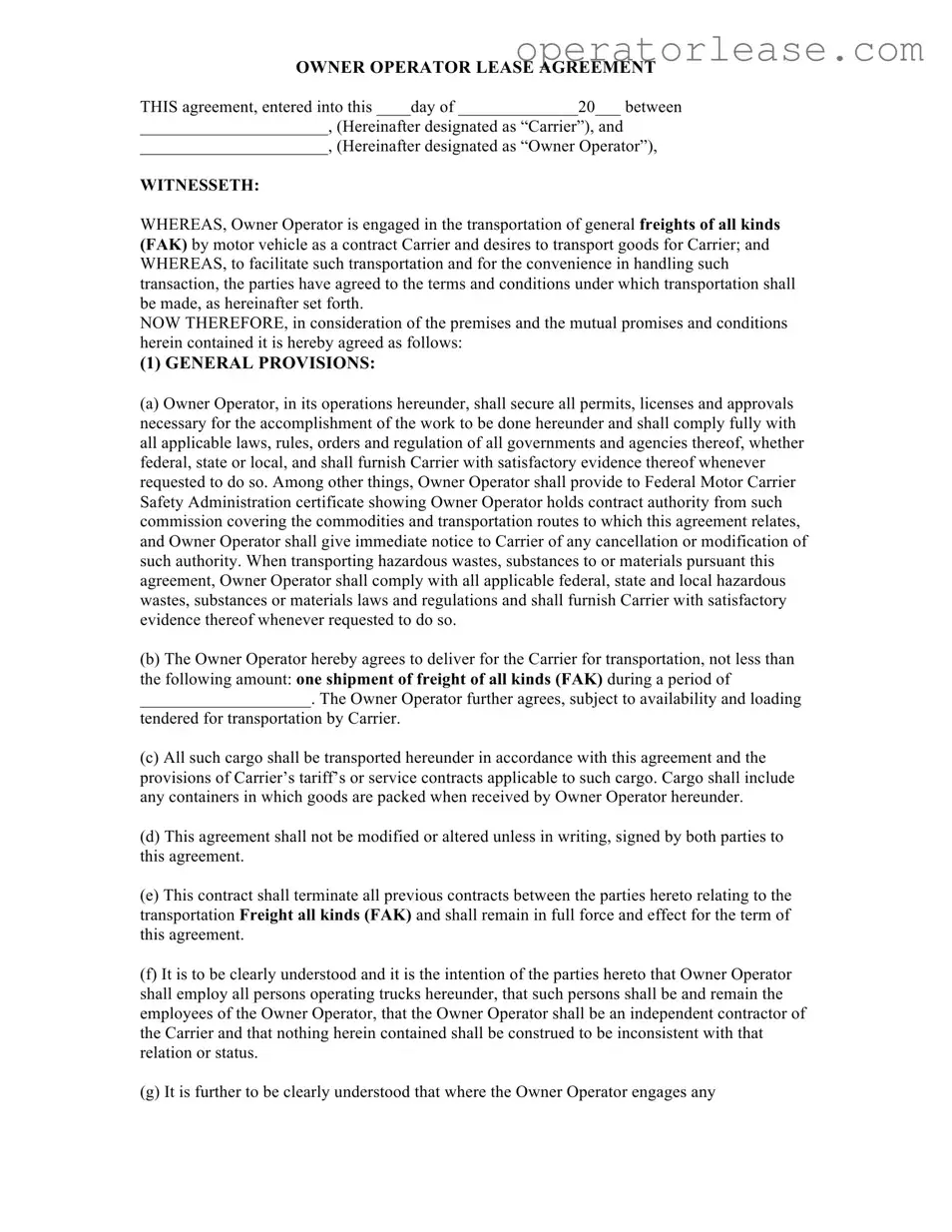The Owner Operator Lease Agreement bears similarities to a Freight Broker Agreement. Both documents establish a formal relationship between two parties involved in the transportation of goods. In a Freight Broker Agreement, a broker arranges for the transportation of cargo by hiring carriers. Like the Owner Operator Lease Agreement, it outlines the responsibilities of each party, including compliance with applicable laws and regulations. Both agreements also emphasize the importance of written documentation, such as receipts and invoices, to ensure clarity and accountability in the transportation process.
Another document akin to the Owner Operator Lease Agreement is the Independent Contractor Agreement. This type of agreement delineates the working relationship between a company and a contractor. Similar to the Owner Operator Lease Agreement, it specifies that the contractor operates independently, ensuring that they are responsible for their own taxes and liabilities. Both agreements also highlight the importance of indemnification, where one party agrees to protect the other from certain legal liabilities arising from their actions.
A Bill of Lading is yet another document that shares characteristics with the Owner Operator Lease Agreement. This document serves as a receipt for goods being transported and outlines the terms of the transportation. Like the Owner Operator Lease Agreement, a Bill of Lading provides essential details about the shipment, including the parties involved and the conditions of transport. Both documents require signatures to confirm receipt and acceptance of the terms, ensuring that all parties are aware of their responsibilities during the shipping process.
The Equipment Lease Agreement is also similar to the Owner Operator Lease Agreement. This document outlines the terms under which one party rents equipment from another. Like the Owner Operator Lease Agreement, it includes provisions for maintenance, liability, and compliance with regulations. Both agreements ensure that the lessee is responsible for the equipment's condition and that the lessor is protected from potential damages or legal issues arising from its use.
Moreover, the Service Agreement shares similarities with the Owner Operator Lease Agreement. This document establishes the terms under which services will be provided between two parties. Both agreements detail the scope of work, payment terms, and the responsibilities of each party. They also emphasize the importance of confidentiality and compliance with relevant laws, ensuring that both parties are protected and informed throughout the duration of their partnership.
The Non-Disclosure Agreement (NDA) is another relevant document. While it primarily focuses on protecting sensitive information, it shares the confidentiality aspect found in the Owner Operator Lease Agreement. Both documents require parties to keep certain information private and outline the consequences of unauthorized disclosure. This ensures that business interests are safeguarded while fostering a trusting working relationship.
Lastly, the Transportation Agreement is similar to the Owner Operator Lease Agreement in that it governs the transportation of goods. This document outlines the terms of service, responsibilities, and liabilities of both the carrier and the shipper. Like the Owner Operator Lease Agreement, it emphasizes the importance of compliance with laws and regulations, as well as the need for proper documentation to ensure smooth operations during the transportation process.
